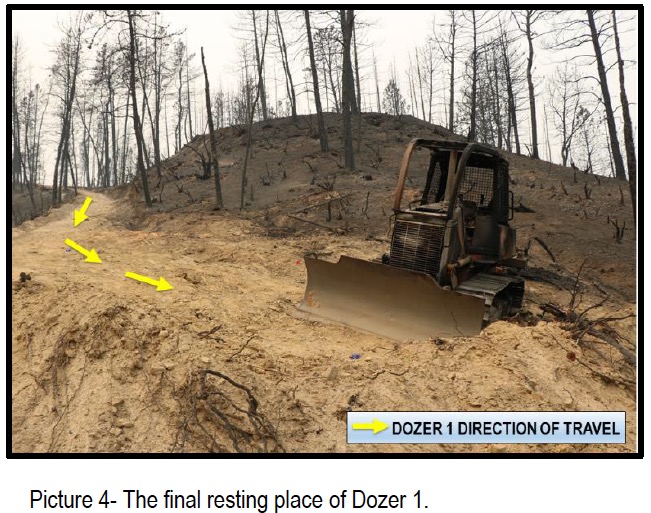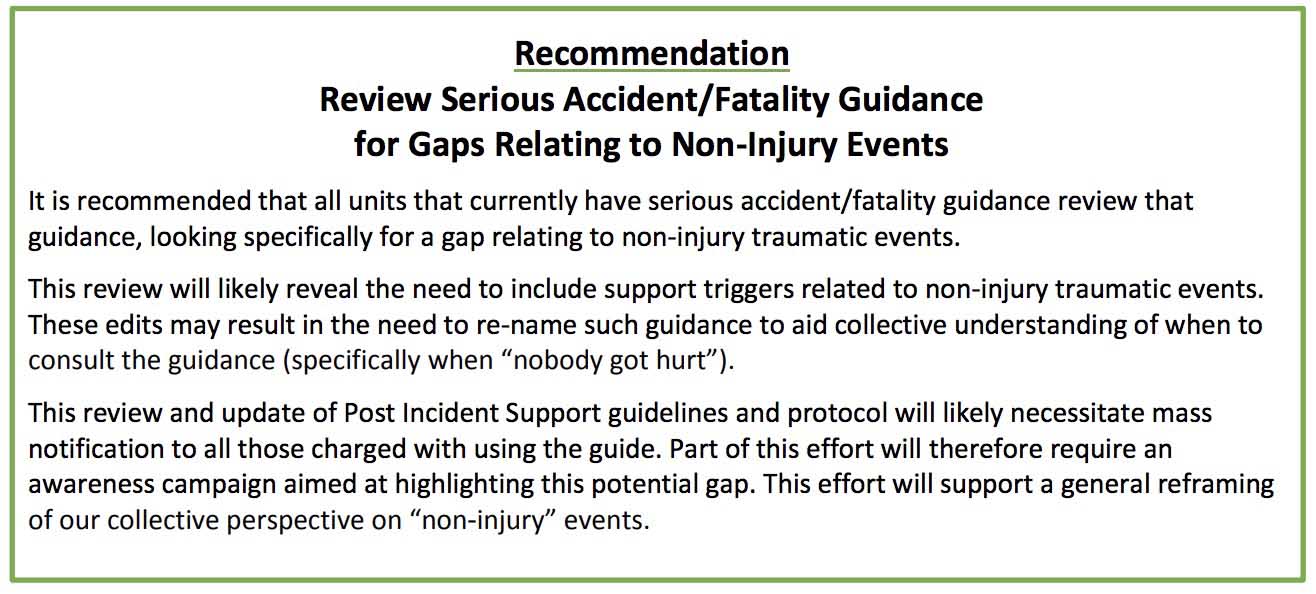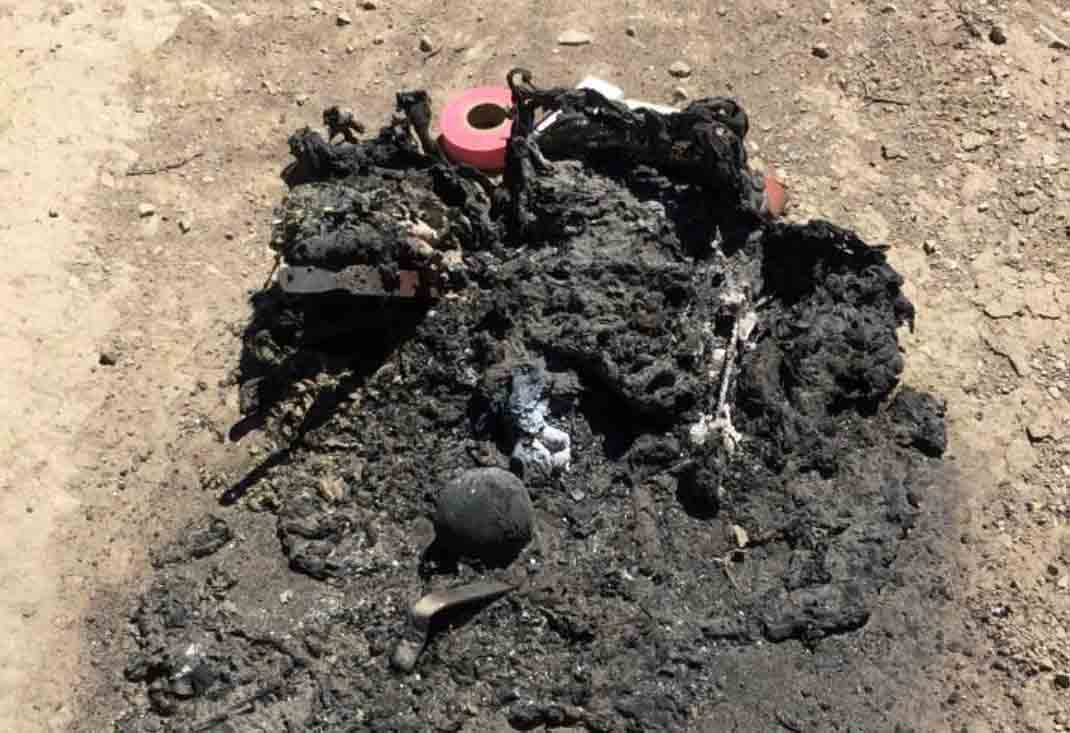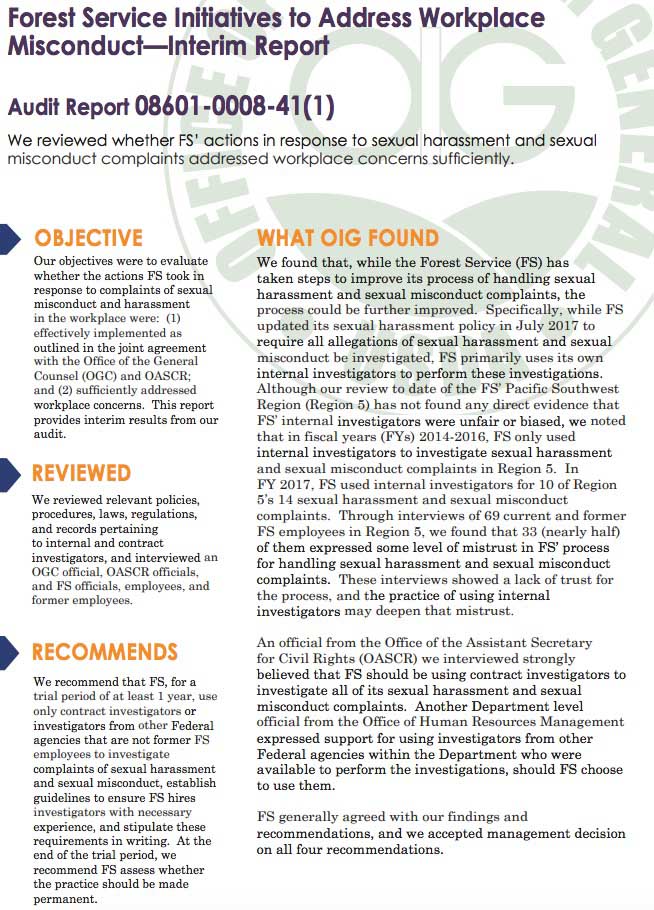Above: Fire tornado filmed by the Helicopter Coordinator on the Carr Fire July 26, 2018 near Redding, California. The video can be seen HERE.
A “Green Sheet” report on the two firefighter fatalities that occurred July 26, 2018 on the Carr Fire was released this week. Extreme fire behavior during a two-hour period led to a Redding Fire Inspector (FPI1) and a dozer operator (Dozer 1) being overrun by the fire and killed. The report concluded that FPI1, “suffered fatal traumatic injuries when entrapped in a fire tornado while engaged in community protection operations. Dozer 1 suffered fatal thermal injuries while he was improving fireline”, but the report did not say the entrapment was related to the fire tornado.
At times the media or the general public loosely throws around the term “fire tornado”, giving the name to fairly common much smaller fire whirls. But documented fire tornados are much larger, and usually a very destructive weather-induced fire phenomenon.
Below are excerpts from the Green Sheet report:
A large fire tornado was one of the primary causes of the entrapment and death of FPI1 on July 26, 2018. The fire tornado was a large rotating fire plume that was roughly 1000 feet in diameter at its base. 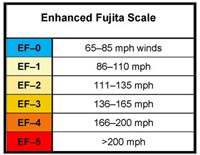 Winds at the base of the fire tornado reached speeds in the range of 136-165 mph (EF-3 tornado strength), as indicated by wind damage to large oak trees, scouring of the ground surface, damage to roofs of houses, and lofting of large steel power line support towers, vehicles, and a steel marine shipping container within ½ mile of the entrapment site. The strong winds caused the fire to burn all live vegetation less than 1 inch in diameter and fully consume any dead biomass. Peak gas temperatures likely exceeded 2,700 °F.
Winds at the base of the fire tornado reached speeds in the range of 136-165 mph (EF-3 tornado strength), as indicated by wind damage to large oak trees, scouring of the ground surface, damage to roofs of houses, and lofting of large steel power line support towers, vehicles, and a steel marine shipping container within ½ mile of the entrapment site. The strong winds caused the fire to burn all live vegetation less than 1 inch in diameter and fully consume any dead biomass. Peak gas temperatures likely exceeded 2,700 °F.
Current understanding of how large fire tornados form and propagate suggests that necessary factors include high energy release rates, sources of vorticity (rotating air), and low to moderate general winds. All of these factors were present in the area of Buenaventura Boulevard on July 26. Observations from witnesses and other evidence suggest that either several fire tornados occurred at different locations and times, or one fire tornado formed and then periodically weakened and strengthened causing several separate damage areas.
[…]
(From page 8-9; Dozer 1 was improving a dozer line toward Spring Creek Reservoir)
At approximately 5:44 p.m., the fire jumped the top of the dozer line near the access road (picture 2). Multiple spot fires became established in the area. Approximately two minutes later, CREW1 Leader returned to the water treatment plant and asked where Dozer 1 was located. CREW1 Leader was told that Dozer 1 had proceeded down the dozer line. CREW1 Leader made several attempts over the radio to contact Dozer 1 in order to tell him to “get out of there”.
Two firefighters from a local government engine strike team were positioned near the top of the dozer line and recognized the urgency of the situation. They attempted to chase Dozer 1 on foot, but were unable to make access due to increasing fire activity.
CREW1 Leader was finally able to establish radio contact with Dozer 1. Dozer 1 stated he could not get out because he was cut off by the fire, and he would push down instead. Sometime between 5:46 p.m. and 5:50 p.m., radio traffic was heard from Dozer 1 that he was on a bench attempting to make a safety zone. Dozer 1 was also requesting water drops.
At approximately 5:50 p.m., a CAL FIRE Helicopter (Copter 1) began making numerous water drops through the smoke in and around Dozer 1’s last known location. Copter 1 notified the Helicopter Coordinator (HLCO) of Dozer 1’s situation, and HLCO assigned three more helicopters to drop water in the area. HLCO noticed a dramatic increase in fire behavior; however, the helicopters continued to make water drops as conditions worsened. At approximately 6:08 p.m., Copter 1 was forced to land due to a temperature warning light resulting from the high atmospheric temperatures. Approximately 30 minutes later, Copter 1 returned to service and continued to drop water on Dozer 1’s location.